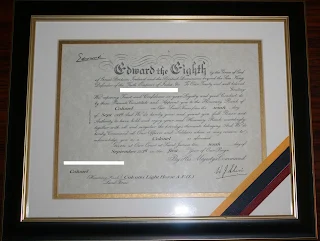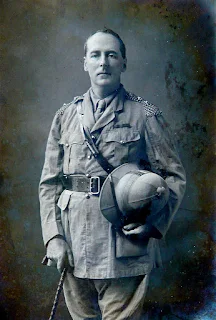The concept of using variants of peacetime sporting kayaks in military raiding missions by British Special Forces during World War II was conceived of by several individuals. at about the same time, and each evolved into parallel units. One of the earlier unit was the Army Commando Special Boat Sections, which evolved into the Special Boat Squadron. Its founder was Major Roger (‘Jumbo’) Courtney, MC. Also developed within the Army Commando was 101 Troop. Within the Royal Navy an organization called the Combined Operations (Assault) Piloting Parties (COPP’s) were developed.by Captain Nigel Clogstoun-Willmott, DSO, DSC, RN. Finally the Royal Marines, lead by Lieut-Colonel H.G. (‘Blondie’) Hasler, DSO, OBE, RM, developed the Royal Marine Boom Patrol Detachments (RMBPD) and there was a separate unit designated Detachment ‘385’. These latter two units were the forerunners of today’s Royal Marine Special Boat Service (SBS). In addition there was the Small Scale Raiding Force (SSRF) and the Sea Reconnaissance Unit (SRU) founded by Lieut-Commander Bruce Wright, RCNVR, who was an Olympic grade swimmer. There were a few other units raised, but these were the main ones.
 |
| The 'tombstone' formation badge of WWII British Combined Operations, worn by the swimmer-canoeists, and still worn by their special forces today, including the elite Special Boat Service |
The ‘Folbot', a sports kayak, manufactured by the Folbot Company, and the Goatley Boat were the principal common origin of craft employed by all these organizations. Needless to say the Folbot had to undergo significant and continuous modification and refinement in order to meet the rigorous requirements of sustained oceangoing combat operations. First and foremost the craft were renamed and officially designated 'Cockles'. The Goatley Assault Boat was originally designed and built by Fred Goatley for combat operations, but was based on his previous peacetime designs. The single best reference I have found on the development and operations of all these boats is, The COCKLESHELL CANOES BRITISH MILITARY CANOES OF WORLD WAR TWO, Q. Rees, Amberley Publishing, Chalford, Stroud, Gloucestershire, 2008, ISBN 978-1-84868-065-4 (See video of BBC interview below). The detailed technical information and copies of original drawings and photographs contained in this book are exceptional.
I am personally indebted and most appreciative of Quentin Rees' direct contributions to this blog, insuring the accuracy of the contents.
I am personally indebted and most appreciative of Quentin Rees' direct contributions to this blog, insuring the accuracy of the contents.
There are very few surviving specimens of any of these vessels (6 known), the majority of which reside in military museums. On extremely rare occasion a privately owned example will come up for sale or auction.
The following set of drawings shows a representative grouping of some of the designs employed by British Special Forces during World War II.
1. Cockle Mark 1, (sports kayak procured by Admiralty) circa 1939-1940
2. Cockle Mark 1**, (purpose built primary craft of COPP's) circa 1942
3. Cockle Mark 2**, (purpose built) circa 1943
4. Cockle Mark 6 (Powered)
5. Motor Submersible Canoe (MSC ‘Sleeping Beauty’)
6. Klepper Canoe (RM SBS, derivative used in Falklands 1982) circa 1958 – Present
7. 18’ Dory, circa 1941
8. 20’ Surf Boat, circa 1942
9. Y-Type Inflatable Raft, circa 1943
 |
| Drawings of representative Cockles and other craft employed by British Special Forces in World War II |
 |
| A Cockleshell Mk 2 beached; Compare details closely with an exhibit of the real thing shown below |
 |
| A Cockleshell Mk 2 still at sea |
The following photograph was taken at an exhibit at the Combined Military Services Museum, Chelmsford, Essex. The craft is one of the six actual canoes used in Operation Frankton, the Royal Marine Commando attack on German shipping in the French port of Bordeaux in 1942. It is the restored Cockle Mark 2 named 'Cachalot', which was damaged onboard the submarine HMS Tuna during the initiation of the raid, and forced to abort the mission. The 1955 movie 'Cockleshell Heroes' was based on this raid. Lieutenant Colonel Herbert "Blondie" Hasler, DSO, OBE, the leader of the real-life raid, was seconded to Warwick Films as technical advisor. Ex-Corporal William Sparks, DSM, the other survivor of the raid, was also an advisor.
 |
| The exhibit at the Combined Military Services Museum, Chelmsford, Essex of a restored Cockle Mark 2 |
The following series of photographs are of a Cockle Mark 2**, showing details of its construction. This Cockle also currently resides in the Combined Military Services Museum, Chelmsford.
 |
| Engineering drawing detailing the retractable two-stroke gasoline engine installed in the Canoe MK VI and Canoe MK VIII |
Following the end of World War II the majority of these units were disbanded or down sized. However the Royal Marine Commandos maintained a small craft capability for the missions of coastal/beach reconnaissance and raiding. Missions of this nature continue to be executed to this day by the Special Boat Service. The next photograph is shown with thanks and full acknowledgement to the Elite UK Forces web page.
"Special Boat Section (SBS) commandos paddle a 2-man canoe during training for a raid on the Northeastern coast of Korea, 12 December 1951. During the Korean conflict, the SBS carried out a number of reconnaissance and sabotage operations along the enemy's coastline coast and further inland. The 2-man canoe is a stealthy method of infiltration/exfiltration that is still believed to be in use in the modern-day SBS.
Between 1940 and 1977, ' SBS' stood for Special Boat Section. From 1977-1987 the SBS became the Special Boat Squadron,. In 1987 the unit became part of the United Kingdom Special Forces group (UKSF) and changed its name to the Special Boat Service."
Between 1940 and 1977, ' SBS' stood for Special Boat Section. From 1977-1987 the SBS became the Special Boat Squadron,. In 1987 the unit became part of the United Kingdom Special Forces group (UKSF) and changed its name to the Special Boat Service."






Q!BODdvscdNQ~~_3-1.jpg)

























